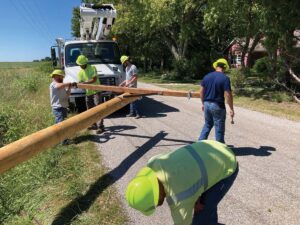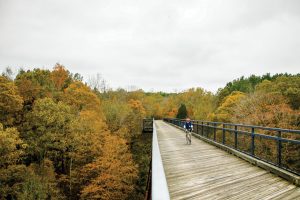Almost anyone can do it, and it’s one of the best paths to fitness and health.
“Walking can be done anywhere at any time, and it’s an excellent way to stay active and healthy,” says Serena Weisner, MS, director of community programming for the Osteoarthritis Action Alliance (OAAA), a national coalition working to raise awareness and provide education about osteoarthritis. “Research has shown that walking regularly can help prevent osteoarthritis and help keep people in better shape.”
Walk With Ease
The OAAA, headquartered at the University of North Carolina at Chapel Hill, is working with the Arthritis Foundation across the country to implement Walk With Ease, a self-directed program that lets people work at their own pace to increase their activity.
“Walk With Ease has so many benefits for people of any age, from improving balance and strength to helping people feel more confident in their ability to be active,” Weisner says. “It includes a workbook with a walking plan and is available in English and Spanish.”
Videos found on the Arthritis Foundation’s website, arthritis.org, demonstrate recommended stretches, warm-ups and cool downs to help people walk more safely.
People of any age can experience arthritis. “There are more than 100 types of arthritis. Osteoarthritis can be improved by staying active and is most common in people in their 60s and older, but it can affect younger people as well,” Weisner says. “Research has confirmed that people who stay consistently active tend to manage osteoarthritis more effectively than those who are sedentary. This is opposite of what many people believe. They often think that if their joints hurt, they shouldn’t move, but that’s just not true.”
Reap the good things
Walking has several benefits. It can strengthen muscles, which helps support joints and keep them better aligned. It can also improve cardiovascular health and blood pressure. Walking can also help decrease stress.
“No matter what your fitness or activity level, starting a walking routine is achievable,” Weisner says. “You don’t need any special equipment other than a supportive pair of walking shoes; it’s an easy activity you can do at your own pace; and it’s low-impact, so it is less likely to injure joints than higher impact activities like jogging or running.”
Getting started
“Ask yourself to identify your barriers to walking. Write them down, then take them on one at a time,” Weisner says. “If you say you don’t have time, work it into your daily routine.”
Weisner suggests parking your car farther away from the store when running errands or march in place when on conference calls. If you lack motivation, find a walking partner to help inspire each other. If you’re bored, listen to music or podcasts to get you going. If you can’t walk outside, walk inside your home.
“Start out slowly, perhaps only doing 5 or 10 minutes a couple of days a week, and build up your routine,” she says.
The best routine
Weisner recommends following Walk With Ease’s five-step approach for a good and safe walking routine. “Your walk is more than the walking part,” she says. “For the first 5 minutes, do a slow warm up of your muscles followed by a few gentle stretches. Then walk at your own pace for your own amount of time. When finished, take another 5 minutes to cool down by walking slowly and stretch. This will help prevent muscle soreness and reduce the risk of injury.”
For maximum effectiveness, build up to 30 minutes a day for five days. “This can be done in two 15-minute walks or three 10-minute walks. The goal is to eventually walk about 150 minutes a week to reap the greatest benefits.
“If you need to start slowly or miss a few days or a week, don’t get discouraged,” she says. “Create a walking program that works for you and your lifestyle. The key is to start where you are, set achievable goals and realize that you’re doing a positive thing for yourself. It’s a good habit to get into that will give you long-term benefits for your overall health and wellness.”
Walk With Ease: 5 STEP BASIC WALKING PATTERN
- WARM UP – Get ready for your walk by walking at a slow pace or marching in place for 3-5 minutes.
- GENTLY STRETCH – Stretch both sides of the body, don’t bounce, and make sure you are not holding your breath.
- WALK – The amount of time you walk depends on your capacity. It can range from 5-30 minutes. Aim for reaching 30 minutes total 5 days/week.
- COOL DOWN – Allow heart rate to recover or return to a more resting level.
- GENTLY STRETCH AGAIN – Repeat the same stretches you did during the warm-up but hold each stretch for 45 seconds on each side. Remember to breathe.
Source: Arthritis Foundation









